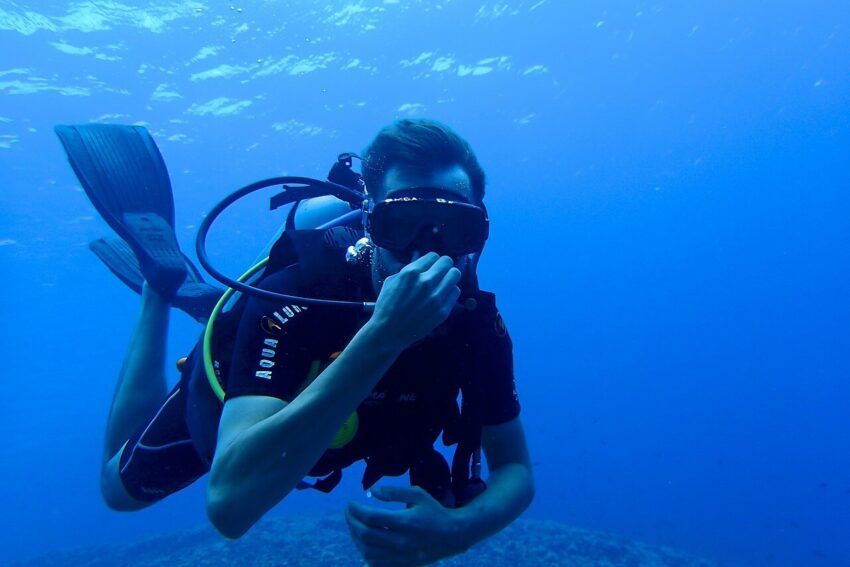Drysuit vs Wetsuit – What Is the Difference

One of the keys to having an enjoyable and safe dive is staying warm once you go under. You need to have a thermal protection suit in order to achieve this and there are two choices – a drysuit or a wetsuit. In addition to the temperature of the water, there are other considerations to look into.
How They Work
Wetsuits – With a wetsuit, water is allowed in and trapped against the skin. It then warms up so that you are in effect surrounded by a layer of warm water.
Drysuits – These ones are totally watertight and they seal at the ankles and wrists so that you remain dry and are surrounded by air.
Wetsuit – Advantages and Disadvantages
Advantages
- Readily available and ideal for diving just about anywhere around the globe
- Come in a wide variety of styles and options
- Less costly than drysuits
- Simple maintenance
Disadvantages
- In colder waters they are a poor choice and in warm water they tend to get cold when you go on a long dive.
- Trying to put it on when it is wet is not a pleasant experience.
- As you go deeper in the water, you lose thermal insulation.
Drysuit – Advantages and Disadvantages
Advantages
- They are very warm. They are ideal for cold and icy waters.
- Putting them on is easy even when wet.
- They can help to improve how you dive because they maintain the perfect body shape under water.
Disadvantages
- They cost more than wetsuits
- You need to be trained how to master them in order to use comfortably when under water. When you dive they inflate creating task-loading if you are inexperienced at diving.
- The maintenance can be tedious both seasonally and after a dive.
Which One Should You Wear?
The main consideration when selecting whether you should wear a wetsuit or a drysuit is the temperature of the water. Here is a guide, a pretty rough one, which can help you decide. Of course, your tolerance to the colder temperatures and individual comfort will need to be factored in:
- If you will be swimming in waters that are over 26°C or 80°F wear a 2mm wetsuit
- If the water is between 20 – 26°C or 69-79°F a 7mm wetsuit is ideal
- If it is between 14°C and 20°C or 58°F and 68°F a full drysuit, semi dry suit or a 7 mm wetsuit with a double layer will work best
- If you will be swimming in waters under 14°C or 58°F then a full drysuit is your best option.
That’s all about “Drysuit vs Wetsuit – What Is the Difference”. If you need any further information let us know.
